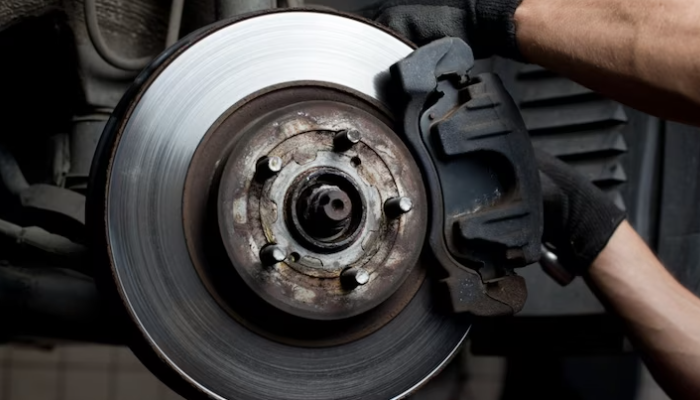When to Replace Brake Pads?
Understanding the importance of well-maintained brakes is vital for both your vehicle's longevity and your safety. In this comprehensive article, we explore the world of brake pads and shoes, their functions, and the crucial signs that indicate it's time for a replacement.
What Are Brake Pads and Brake Shoes?
Automobiles employ two primary types of brakes: disc brakes and drum brakes. Both mechanisms rely on friction to slow down your vehicle, but they operate differently.
Disc Brakes: These use specially engineered "pads" crafted from organic, metallic, or ceramic materials. When you apply the brakes, these pads press against a rotor or "disc," generating friction and consequently slowing your vehicle. Disc brakes are typically found on the front axles of modern passenger vehicles, with some featuring them on the rear axle as well.
Drum Brakes: In contrast, drum brakes use friction material akin to disc brake pads, but it's affixed to half-moon-shaped "shoes." When you engage the brakes, these shoes press against the interior surface of a drum, generating friction that decelerates your vehicle. While drum brakes were once prevalent on all four wheels, modern cars, and light trucks primarily feature them on the rear axle.

The Importance of Regular Inspection
Both brake pads and shoes experience wear and tear with use. Therefore, it's crucial to monitor their condition through regular inspections. Allowing them to wear out completely before replacement can lead to costly repairs and, more importantly, unsafe driving conditions.
Signs It's Time for Replacement
Knowing when to replace your brake pads or shoes is essential for vehicle maintenance and safety. Look for these key indicators:
1. Squealing or Screeching Noises
Some brake pads come equipped with wear indicators. When these pads wear down, a small metal attachment on the pad's backing plate emits a squealing, screeching, or whining noise during braking. This serves as an audible signal that it's time for inspection and possible replacement. Keep in mind that not all brake pads feature this wear indicator, so it's wise not to rely solely on sound for assessment.
2. Less Than a Quarter Inch of Brake Pad
For disc brakes, you can visually inspect the pads, but this might require removing the wheels. If you look at the brake assembly or caliper from above, you should see the brake pads in contact with the brake rotor. If the pad's friction material measures less than ¼ inch thick (approximately seven millimeters), it's advisable to have your brakes inspected.
3. Deep Metallic Grinding and Growling
If you hear a deep, low noise resembling metal grinding or a rumbling growl, it's a sign that not only are your brake pads worn, but the backing plates are also making contact with the discs or drums. This metal-on-metal contact can rapidly escalate damage in your braking system, so immediate service is essential.
4. Indicator Lights
Some vehicles feature indicator lights on the dashboard that signal when it's time to replace the brake pads. Consult your owner's manual to check if your vehicle is equipped with a low-pad warning system. If the light illuminates, remember to have your mechanic replace the warning sensors in addition to the brake pads.
How Long Do Brake Pads and Shoes Last?
The lifespan of brake pads and shoes varies based on several factors, including driving habits and conditions. Urban driving or heavy commuter traffic, characterized by frequent braking, can lead to pads wearing out sooner. On the other hand, highway driving with light traffic may extend the lifespan of brakes to 80,000 miles or more.
In conclusion, staying attuned to the condition of your brake pads and shoes is vital for vehicle safety and maintenance. By recognizing the signs and adopting a proactive approach to replacements, you ensure the continued performance and safety of your vehicle.
184
0
0


Comments
All Comments (0)